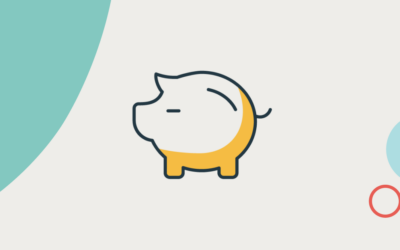You just nailed a pitch for a potential client. The wind is in your sails. You can already visualize the project plan, the deliverables, and the enthusiastic referrals after a job well done. You’re getting ready to draft a follow-up email outlining your pricing and suggesting next steps, but then you pause and remember the workflow: It’s time to create a proposal.
Ahh, the P word. So vague. If you’ve never created a client proposal before and you have no idea where to start, don’t worry. It’s not as daunting as it sounds. You don’t need to get down on one knee and ask your client for their business (although that would be funny). Creating a proposal is just about following a formula and showing off a little. In this post, we’ll break down the basics, offer pro tips, and show you how to create a proposal that lands you more business.
What is the goal of a proposal?
A proposal isn’t just a formality—it’s a critical step in the process of kicking off a new client relationship. And in many ways, it’s like an extension of your sales pitch, giving you another opportunity to sell your services and share what you’re all about. It demonstrates your professionalism and gives potential clients a true taste of what working with you is like. (Spoiler: It’s awesome.)
Beyond encouraging people to work with you, the primary purpose of a proposal is to align on expectations, detail the scope of work, and outline your pricing structure. It’s important to consider exactly what you’re trying to communicate and settle on a plan that is reasonable and achievable, because this is the final step before you move onto creating a contract.
A proposal illustrates your professionalism and gives potential clients a true taste of what working with you is like.
What does your proposal need?
The structure of your proposal will vary based on your industry, services, and project needs, but the general elements of a good proposal are:
-
- About – An introduction explaining who you are, what you do, and why you’re great
- Executive Summary – An overview of the problem you’re solving
- Proposed Solution – An explanation of how you’d solve the problem
- Pricing – Details on your rates and packages
- Call to Action – A final invitation to do business with you
About
The About section gives potential clients a clear picture of who they’d be doing business with. Just like the About page of a website, this section covers your background, your experience, and your services. This is your opportunity to sell yourself again, so be sure to let your personality shine through. Unless the client’s vibe requires it, you don’t need to be hyper-formal or buttoned up here. You’re a human, after all. Giving them a sense of what you’re all about.
This is your opportunity to sell yourself again, so be sure to let your personality shine through.
It’s great to include extra tidbits in the About Us section that may convince someone to move forward too. For example, if you have client testimonials or portfolio links to share, this is the place to do it. Just make sure you’re offering relevant examples that will resonate with your client. You can offer briefs of work you’ve done for other companies in parallel industries, which demonstrates that you’re equipped to serve companies like theirs. Or, better yet, you can include client quotes that offer social proof of your abilities.
Executive Summary
The Executive Summary is the place to show clients you understand them and their needs. This is where you outline the issue or challenge they’re facing and explain how you can help them solve it. This is an opportunity for you to reiterate how you’d approach the project and demonstrate why you’re the best person to take it on. It’s the lay-up to the meat of the proposal (coming next). By establishing what’s needed, you can set up your unique solution.
Proposed Solution
Once the challenge is stated, you can move onto your offering. The Proposed Solution is where you go deep on the details, explicitly laying out the scope of the project, the deliverables, and what success looks like by the end of the project. This section is all about setting expectations. What exactly are you offering? What will they get by the end of the project? And how long will it all take to accomplish?
Creating a detailed outline helps you control the scope of work and align on what it is you’re offering, so it’s crystal clear before you move forward to creating a contract. Remember that a proposal is just that—a proposed solution, not a final offering. This section, in particular, may call for follow-up conversations to clarify and work out the details. The most important thing is that you and the client are totally aligned on what it is you’ll be doing for them, and when.
The most important thing is that you and the client are totally aligned on what it is you’ll be doing for them, and when.
Pricing
The Pricing section of a proposal is pretty self-explanatory. It’s the place for you to detail your rates. If you’re proposing hourly work, be sure to give rough estimates of the total number of hours you will work within a given time period (i.e. daily, weekly, monthly, or over the entire course of the project). If you plan to charge a single project fee or a retainer, it’s important to clearly outline the costs and the time frame for completion. Remember: The terms of the agreement will be in the contract, so you don’t need to get super granular here.
Call to Action
Finally, the Call to Action (or CTA) closes out your proposal and invites the client to take next steps. Make sure you’re clear and confident with your directions. Explain exactly what they should do next. If they want to accept the proposal, should they reply back to confirm? And if so, how long do they have to consider it? If they have questions, can they schedule another call to discuss or should they email you? If they don’t want to move forward, how should they notify you? Lay it all out. Make it easy for them to say yes.
![]()
Proposal Pro Tips
If you’ve made it this far and you’re feeling good, hell yeah. Proud of you. Here are some extra pieces of advice to help you create a proposal that lands you work ASAP (without sapping your time and energy).
-
- Don’t recreate the wheel. Use a template!!! They exist for a reason. Templates are great. Templates save time. Templates save lives. If you’re a Harlow user, you can use one of our pre-built templates!
- Consider adding a cover page and a table of contents. Putting some extra TLC into your proposal can sell a client who appreciates the effort. It’s not essential, but it’s nice.
- Make it pretty and readable. A visually appealing proposal adds a lot. It’s also a neat way to show off your branding and give clients a sense of your style. Just make sure it’s easy to read and absorb.
- Keep the contract separate. Some people like to combine their proposal and contract, but we recommend separating these two documents. It’s better to take it step by step and hold off on sending a legally binding contract until you’ve settled on the details of the proposal. See our full post on this for more details.
Ready to propose?
To us?! Blushing. Seriously though, we’re committed to helping freelancers like you create awesome proposals and land new clients with ease. We know the whole pre-project process can be stressful, especially if you’re new to the freelancing game. But with a little time, experience, and great software, it’s easy and even… fun? You can use Harlow for all of your proposal needs by signing up here.


